Trees: Small-leaved lime or Linden
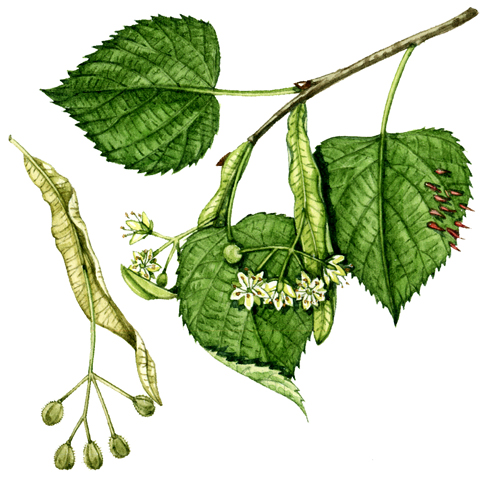
Small-leaved lime Tilia cordata and other Lime or Linden trees
This is one of a series of blogs I’m writing on common British trees. You can also see blogs on the Elder, the Yew, the Ash, the Oak, the Holly, the Sycamore, the Rowan, the Hawthorn, the Birch and the Beech.
There are 10 species of Lime in the UK, with three growing commonly in the wild. Along with the Small-leaved Lime Tilia cordata, the focus of this blog; there is the Common lime Tilia x europea and the Large-leaved (or Broad-leaved) lime Tilia platyphyllos. Lime trees are often called Linden trees, a catch all for all Tilia species.
It’s important to remember that these lime trees have nothing to do with the citrus family’s lime tree which bears the lime fruit, Citrus x Latifolia
Identification: Tree shape
The Small-leaved lime reaches up to 20m and has a pretty conventional shape. They grow in ancient woodland, favouring moist nutrient-rich soils, although Large-leaved limes prefer lime-rich areas.

Lime Tilia cordata tree
Identification: Leaves
Leaves are 3-8cm long and shaped like a heart (as noted in the Latin name, cordata, which means heart-shaped). They have sharp small teeth and a prominent tip. Sometimes they are wider than their length.
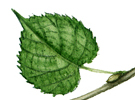
Leaf of Small-leaved lime
Where the leaf stem or petiole attaches to the twig there are tufts of rust-red hairs. These also appear on the underside of the leaf, at the junctions of the veins.
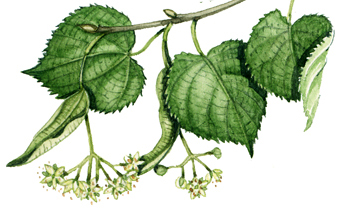
Identification: Flowers
The flowers smell delicious and are carried in clusters of five to ten blooms. They have five petals, are a greenish yellow, and carry male and female reproductive structures.
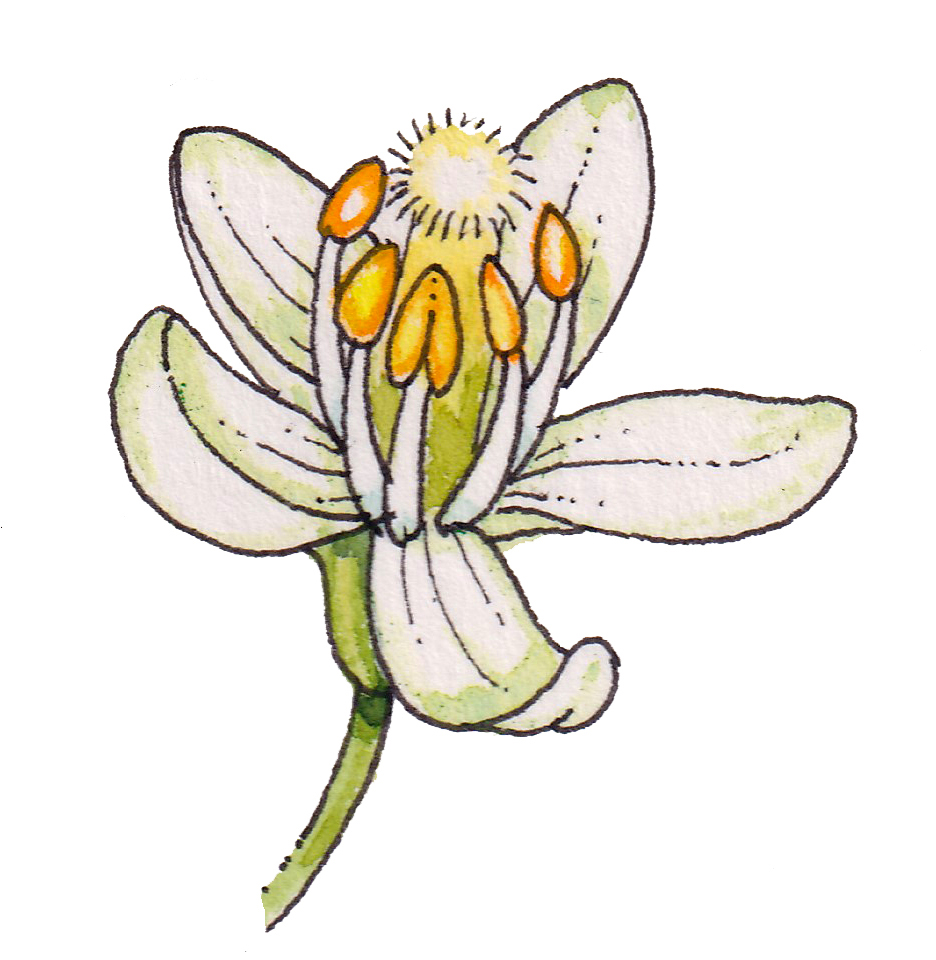
Lime flower
Unlike other Lime trees, the flowers stick out from the leaf-like bract they’re attached to at all angles. Other species have more pendulous blossoms.
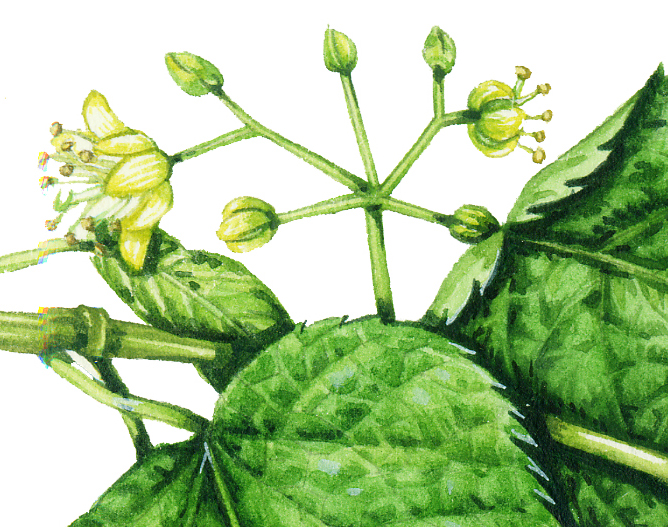
Flowering cyme of the Small-leaved lime Tilia cordata
Identification: Fruit
Small-leaved lime fruit ripen in August and are small and round. They have prominent tips.
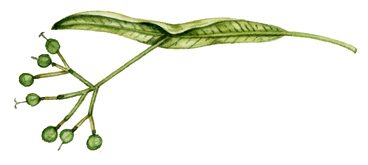
Identification: Bark and buds
Small-leaved lime bark starts smooth but develops fissured plates with age. The twigs are chestnut brown, and become glossy in the sunshine. The underside of the twigs is often flushed olive green.
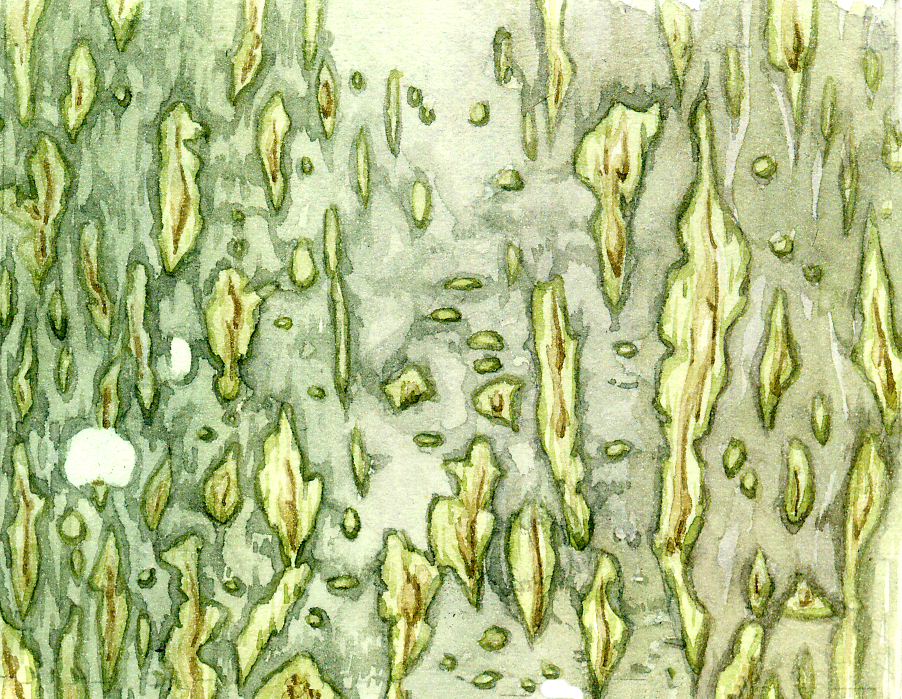
Bark of the Common lime Tilia x europea
Buds are up to 4mm long, have two scales. and are shiny red.
Similar species
The two other common UK Lime species are the Large-leaved and Common lime. The Large-leaved lime has bigger leaves which grow to 13cm long and have more regular teeth. Hairs cover the underside of each leaf. Large-leaved lime carry flowers in clusters of three to a maximum of six, and the fruits are prominently ribbed.
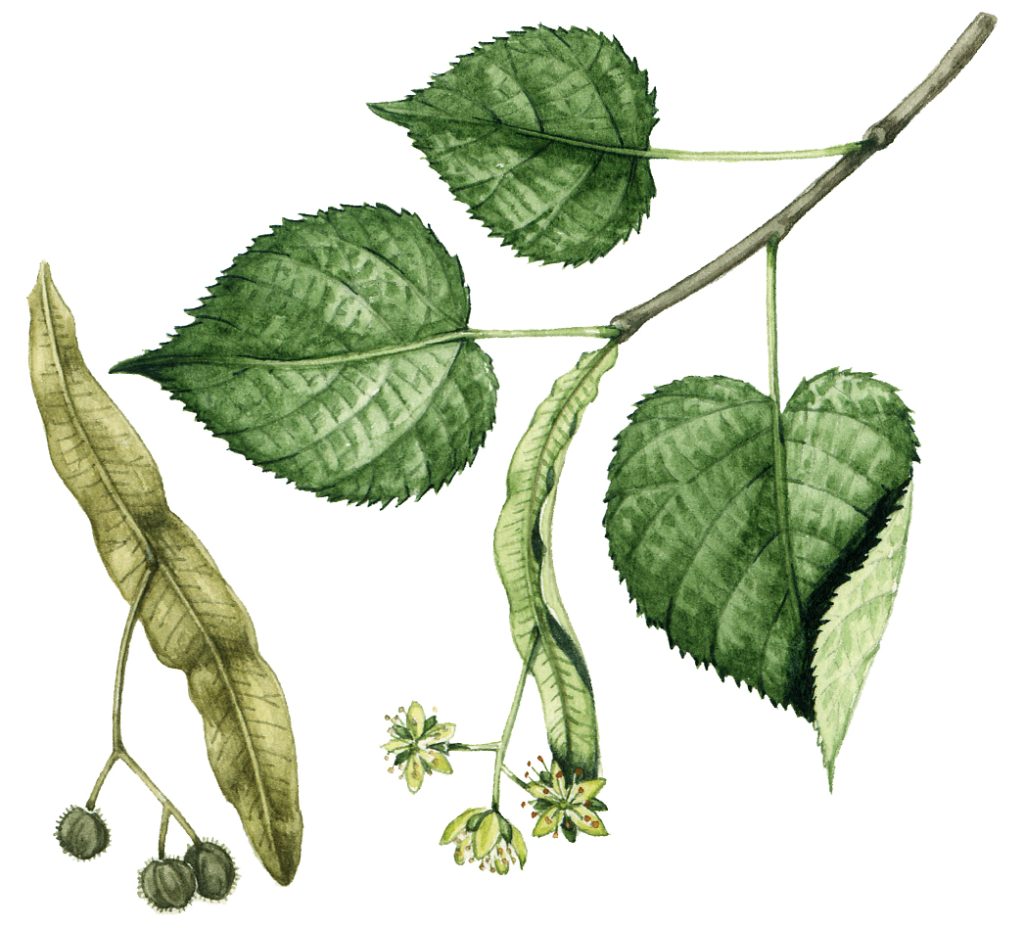
Large-leaved lime Tilia platyphyllos
Common lime is a hybrid of the other two species so shows mixed characteristics. It also has heart-shaped leaves which are larger than those of the Small-leaved lime. The hair tufts on the underside of the leaves are white, not red. When in bud, Common lime twigs zig-zag and bear a bud at each change of direction.
History: Folklore
In Eastern Europe, the Lime is a symbol of fertility and is considered sacred in Slavic culture. It has links to the Germanic and Norse earth goddesses Frigga and Freyya. Germanic cultures in ancient times used the tree as a symbol of justice, with trials taking place beneath its boughs. Tthe Swiss and French planted Lime trees to celebrate battles. In Britain Lime trees were planted along roads to encourage prosperous harvests of grain.
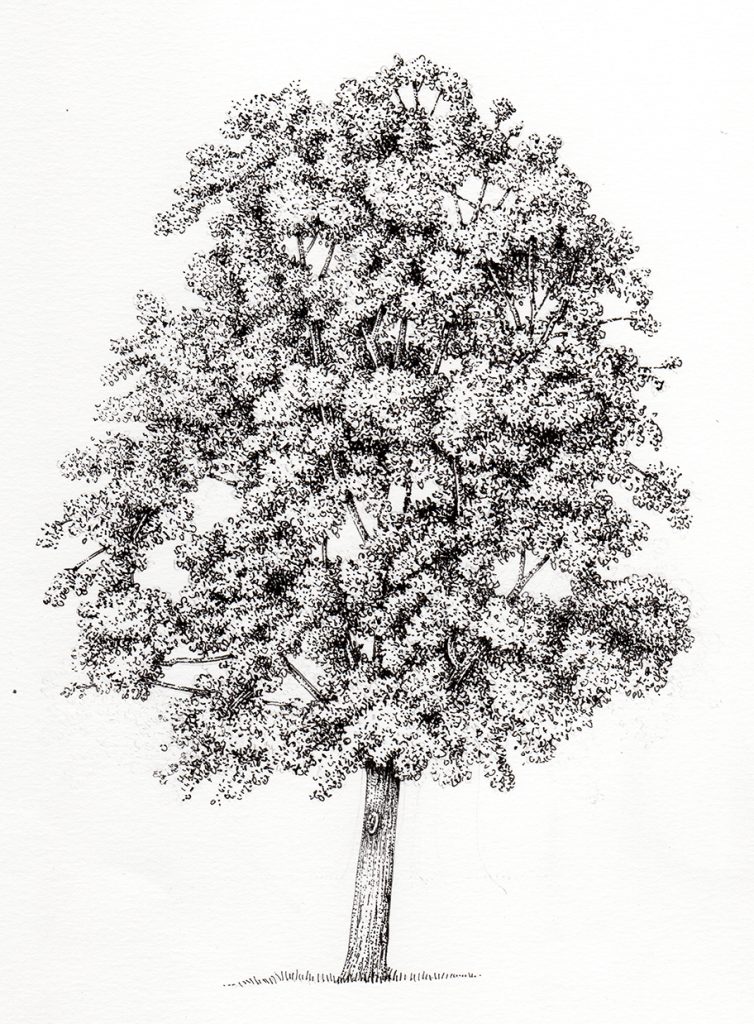
Linden tree
The tree is also associated with love and romance.
History: Mankind and Linden wood
Lime wood does not warp if cured correctly so is used to make bowls, furniture, and piano keys. It is soft and light and easy to work. Grinling Gibbons (1648-1721) carved his ornate alter pieces and panels from lime wood as it cuts cleanly and easily, and traditional nesting Matroshka dolls were carved from Lime.
The inner layer of the bark is fibrous and was used by Europeans and First Nations’ peoples to make rope, fishing nets, and string until Hemp was introduced from China in 400BC.
History: Food and Medicine
The flowers of the Lime tree are dried and made into fragrant herbal teas whilst the sap can be made into wine.
Medicinally, the teas or tissanes made from Lime were used to treat “nervous disorders”. These included headaches and insomnia. The tea is said to soothe diarrhoea and sinusitis as well as being used to calm jangled nerves and reduce blood pressure and cholesterol. It was said that sitting under a Lime tree could mitigate epilepsy.
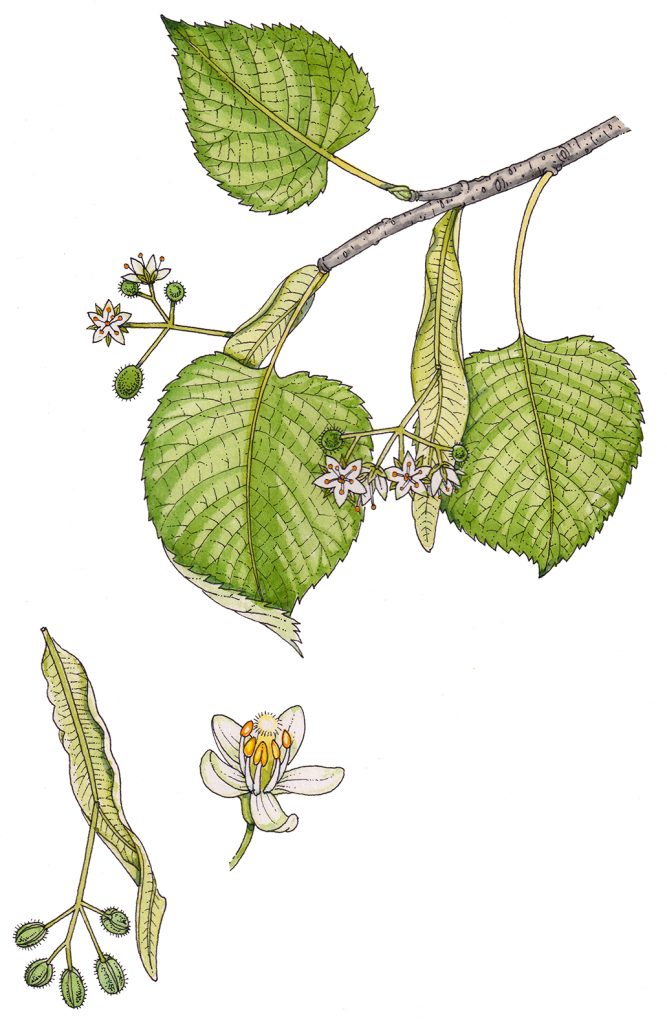
Small-leaved lime
Applied to the skin, it can soothe skin conditions.
Lime trees and Wildlife
The blossoms of the lime tree attract pollinators, and in America Lime tree species are sometimes called “bee trees”. Linden blossom honey is delicious. Along with the bees and butterflies, wasps, and hoverflies, the trees also attract vast numbers of aphids and their “farmers”, ants. All lime trees tend to be coated in honeydew produced by the aphids which makes the leaves sticky and may cover the ground below the tree. The aphids attract predators such as hoverflies and ladybirds.
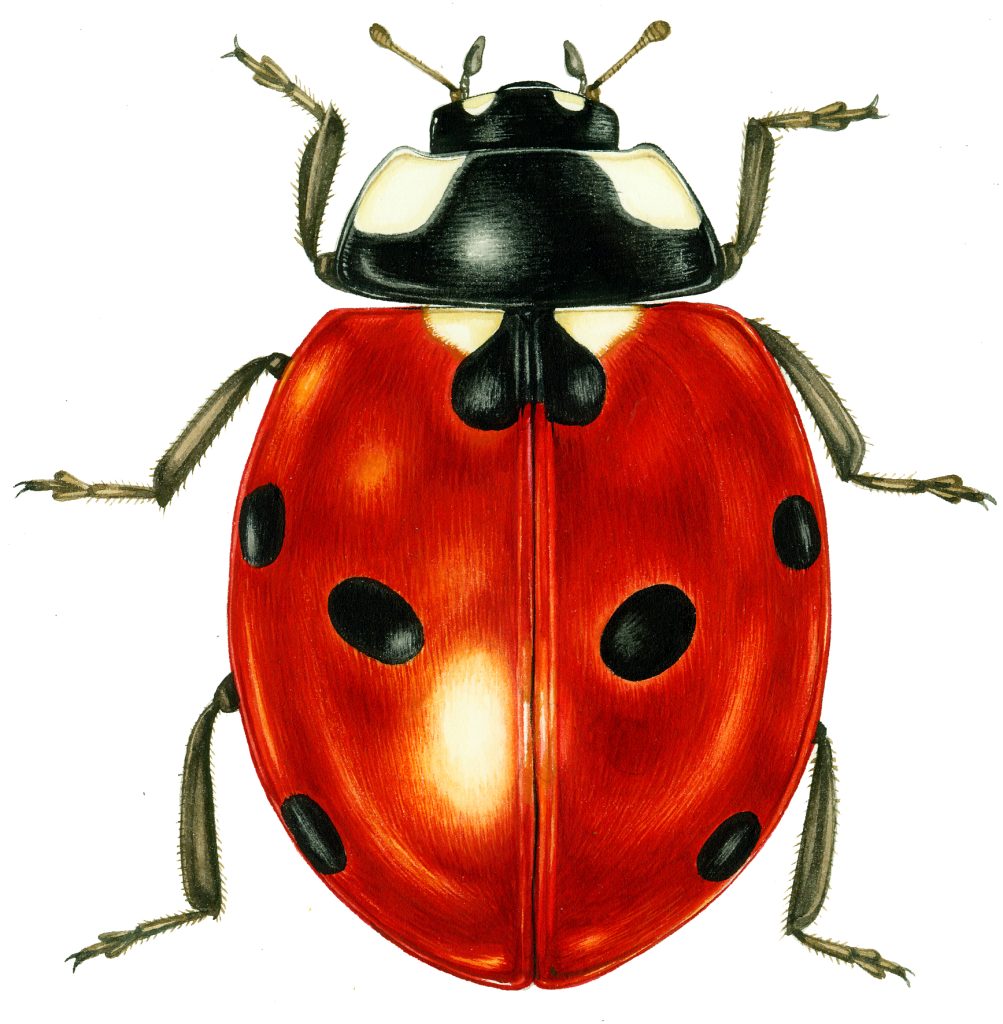
Ladybird Coccinella septempuctata
Nail galls are common on the Small-leaved lime and look like tiny scarlet fingers growing from the leaf surface. They are the product of the Eriophyes tiliae mite which feed inside them, and seem to do no damage to the tree.
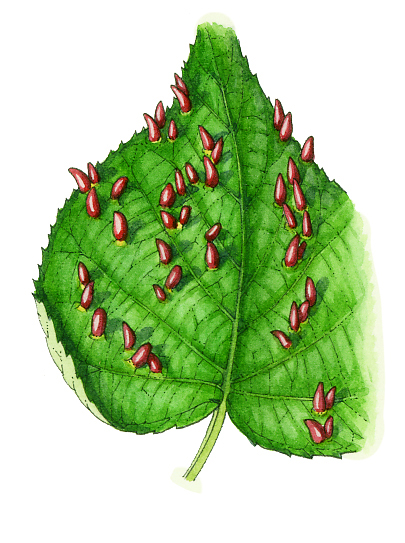
Lime Tilia europaea leaf nail galls from mite Eriophyes tiliae
Moths such as the Lime hawkmoth, Peppered moth, Vapourer and Scarce hook-tip use the Lime as a food plant whilst birds and wood boring beetles exploit the dead wood of older trees to make their homes.
Threats
Ancient woodland is a rare habitat in the UK, although it used to cover much of the land. In 3000BC the Small-leaved lime was the most common broad-leaved tree in the UK. Ancient woodland is where most Small-leaved limes grow, so the threats to this habitat are mirrored in the threats to the trees.
Some fungal infections can cause cankers and root rot, and occasionally a Lime tree may die from Wilt.
Aphids and some mites weaken the tree, but there are no new fatal diseases wiping out all our Lime trees.
Conclusion
With the scented flowers and heart shaped leaves, Limes are easy to recognize. They make safe homes for many insects and are a firm favourite with pollinators. With strong pale wood and a plethora of uses in herbal medicine, the tree has been used by mankind for millennia. And luckily, despite the loss of ancient broad-leaved woodland, the Lime or Linden looks set to remain an important tree of the British Isles for many years to come.
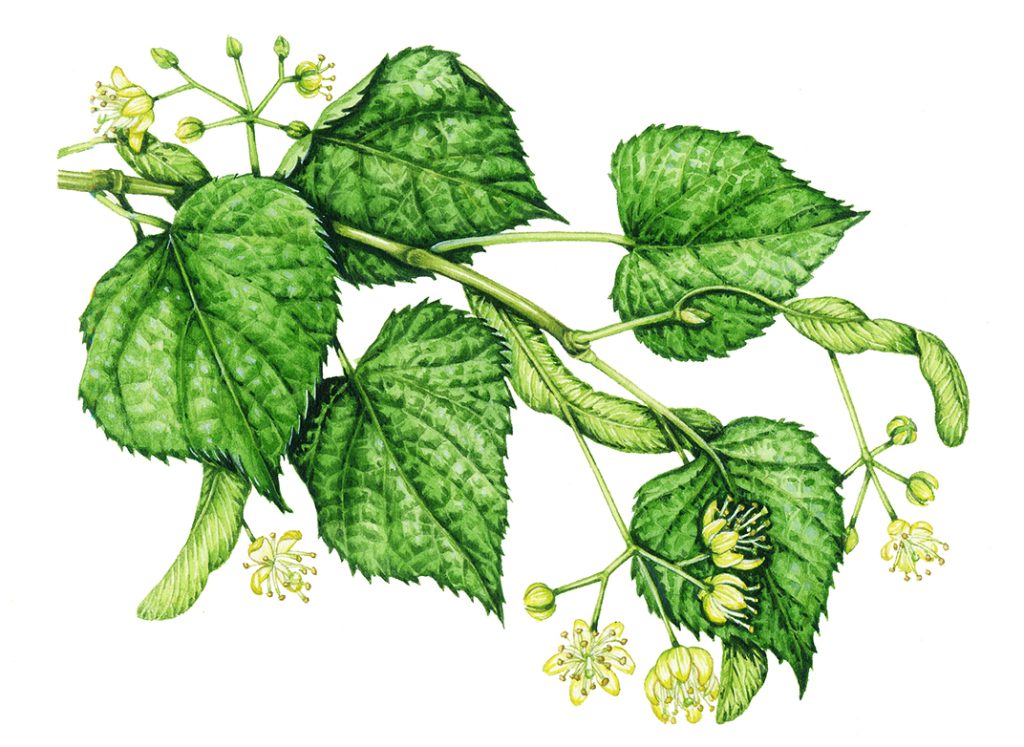
Small-leaved lime Tilia cordata
Online sources for this blog include websites of the Woodland trust, Kew Plants of the World, Tree guide UK, and Nature Spot. Reference books for this blog include the excellent The Greenwood Trees by Christina Hart-Davies, and the Reader’s Digest The Field Guide to the Trees and Shrubs of Britain (out of print but commonly available second-hand). I also referred to The Tree Forager by Adele Nozedar and The Living Wisdom of Trees by Fred Hageneder.


How do Small-leaved lime trees benefit from pruning?
Hello again
Im afraid Im not a gardener so Im not certain, but in general pruning can help promote growth of lateral branches, I think?
Lizzie, I work at a Nutcracker Museum in Washington State, USA. We sell nutcrackers made from Linden wood grown in the Erzgebirge region of Germany. A couple Linden trees are planted near Leavenworth City Hall. I’ve never seen a linden tree in the wild. I enjoyed your article!
Hi Julie, oh what a lovely comment! And how cool, a whole museum dedicated to nutcrackers! Glad to have been able to share a little more about the Linden tree with you, and thanks for taking the time to tell me about the museuum. next time Im on the west coast….
Lovely article.
By the way, did you know the word ‘library’,’liberty’, the ‘£’ sign and ‘lb’pound (in weight) and the words for ‘book’ in many Latin-influenced languages e.g.’llyfr'(Welsh),’livre'(French),Italian and Turkish currencies ‘Lira’ etc. all derive their origins from the lime tree? The soft inner bark or bast known as ‘liber’ of the lime(cognate) used to be harvested as a smooth writing material. These would be rolled up as a scroll and were a predictable approximate weight of about a pound -liber (lb, £[of Sterling silver]). The uniform weight of the liber then lent its name to the scales goods were weighed on against the standard weight’liber’hence Latin ‘libra’ which in turn gave way to the notion of the ‘scales of justice’and the idea of ‘liberty’ for those found innocent.
Richard – information like this is why I don’t despair of the internet! Thank you so much for sharing this, I absolutely love it. Liberty, library, Lire. All from the humble Linden tree. Thankyou